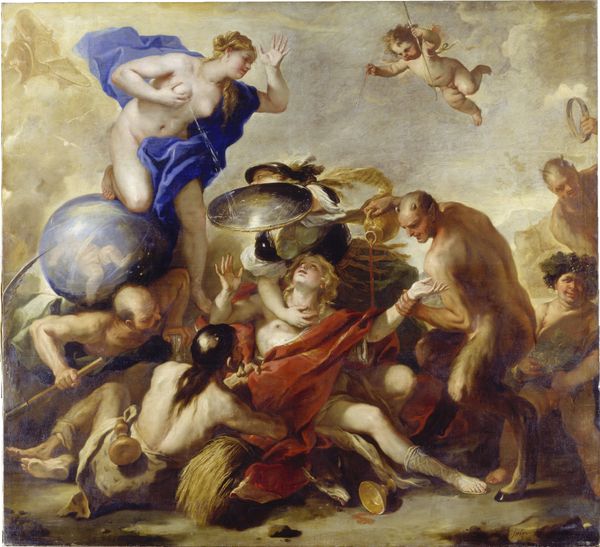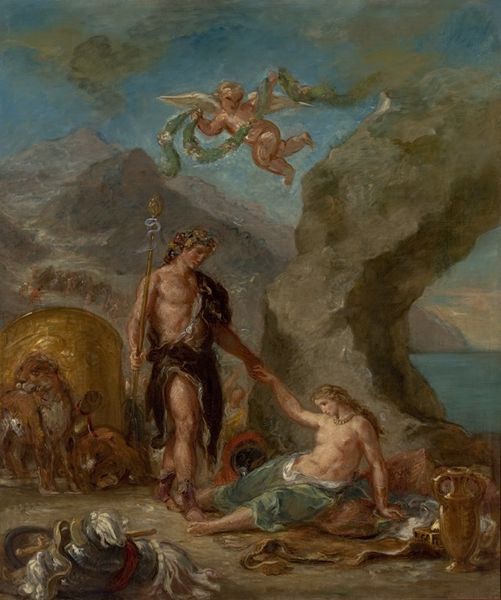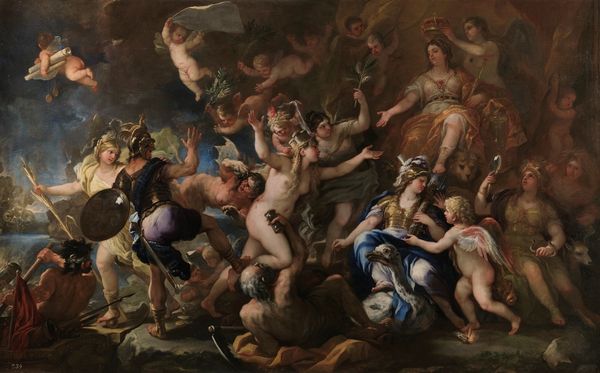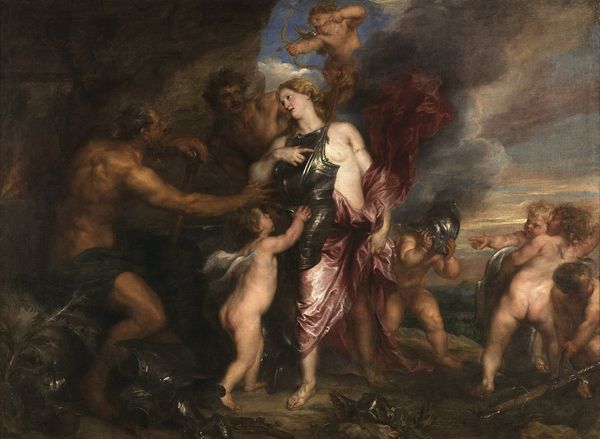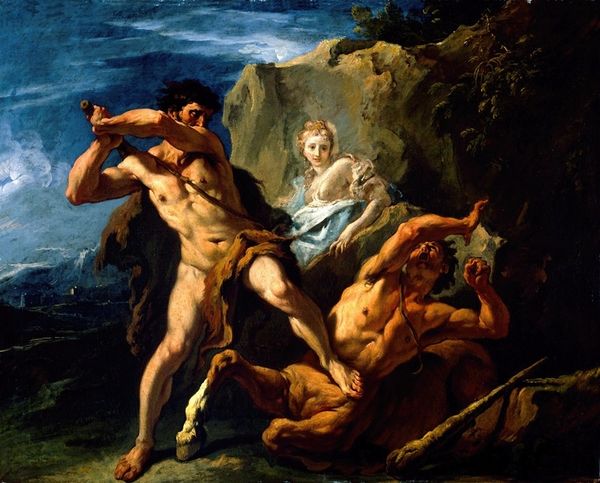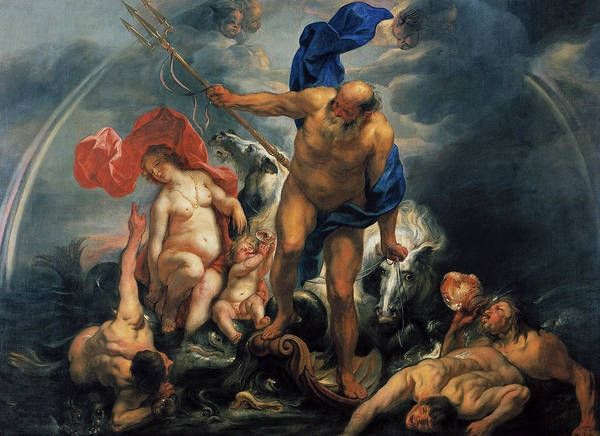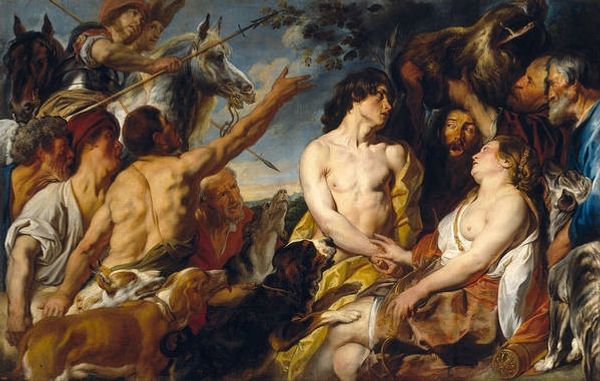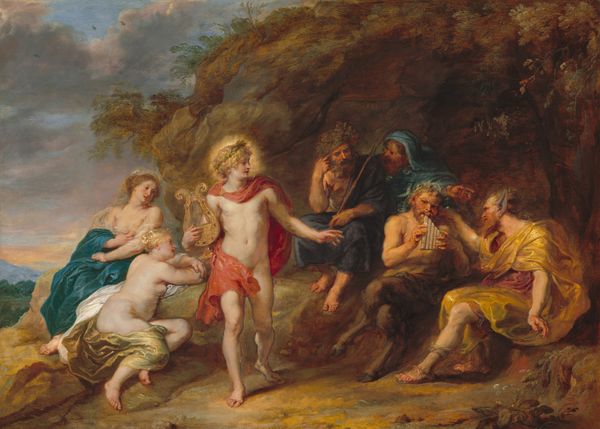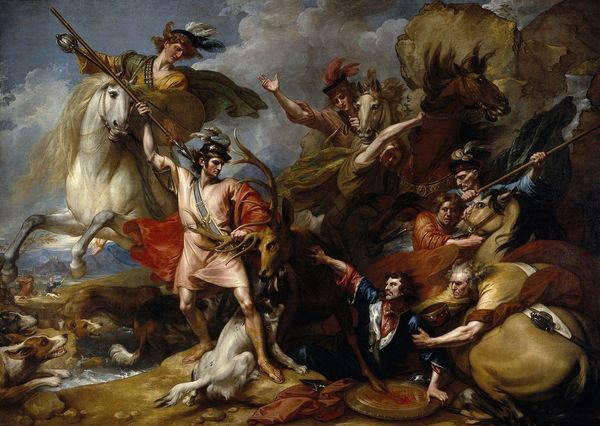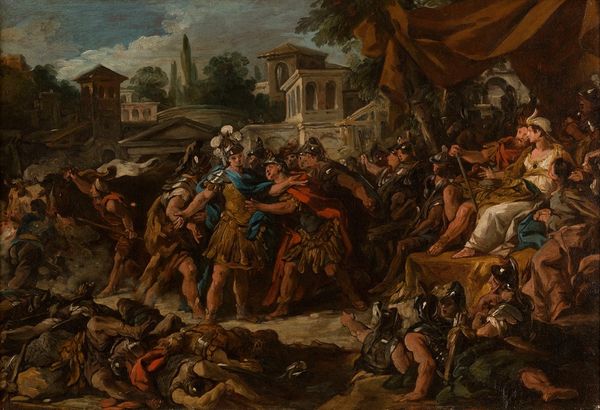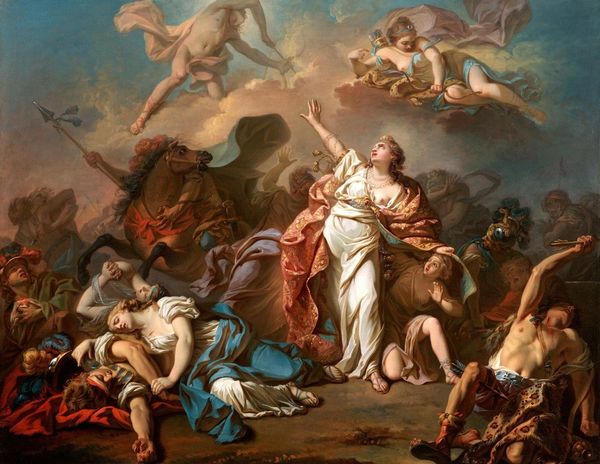
Dimensions: support: 489 x 498 mm frame: 735 x 765 x 97 mm
Copyright: CC-BY-NC-ND 4.0 DEED, Photo: Tate
Editor: Here we have Sir James Thornhill's "Thetis Accepting the Shield of Achilles from Vulcan." It feels very dynamic, but also staged. What can you tell me about the context of this piece? Curator: Well, it's not just a dynamic scene, it's a politically charged one. Consider the British fascination with classical heroism during the early 18th century. Thornhill, in depicting this scene from Homer, taps into a cultural narrative that equates British power with the strength and virtue of ancient heroes. Editor: So, it's not just about the story, but about the message it sends? Curator: Precisely! Look at how Vulcan, the divine smith, is presented. He isn't just forging a shield; he's forging a symbol of power that reflects on those who commissioned and viewed the work. How does the scale influence its public reception? Editor: I hadn't considered that. It really changes how I see the painting, less about mythology and more about its role as propaganda. Curator: Exactly! It highlights how art serves a purpose beyond the aesthetic. Editor: This has given me a new appreciation for considering context!
Comments
tate 6 months ago
⋮
http://www.tate.org.uk/art/artworks/thornhill-thetis-accepting-the-shield-of-achilles-from-vulcan-t00814
Join the conversation
Join millions of artists and users on Artera today and experience the ultimate creative platform.
tate 6 months ago
⋮
This oil sketch depicts a scene from the Trojan wars as described in Homer’s Iliad. The nymph Thetis has persuaded Vulcan, the blacksmith of the gods, to make a set of impregnable armour for her son Achilles.This was probably a design for the decoration of the staircase at Hanbury Hall, Worcestershire. Towards the end of the seventeenth century it had become fashionable to paint the walls and ceilings of important buildings with historical or mythological scenes. Thornhill was the first major British artist to gain favour for painting in this highly ornate Baroque style. Gallery label, May 2007
